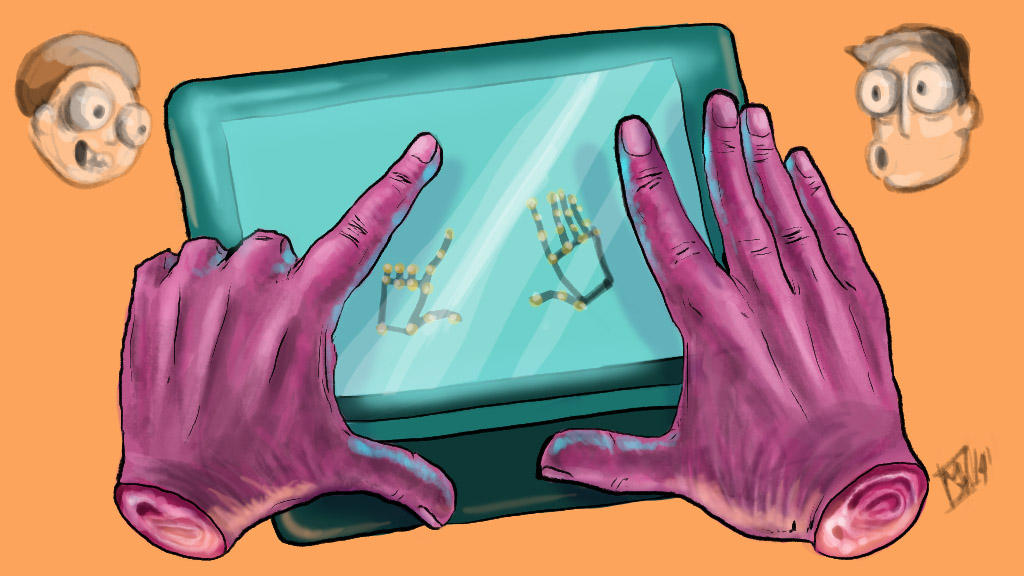MotionSavvy, a software program developed by former RIT students, aims to break communication barriers between Deaf and hearing people.
The key element of MotionSavvy is its ability to process and interpret American Sign Language (ASL) into voice or text. The promotional video on the company’s website shows what it could be like to have a piece of technology that can connect hearing and deaf people.
MotionSavvy uses technology similar to Microsoft’s Kinect to recognize ASL hand gestures and transform them into English words.
It doesn’t stop there—using voice recognition software comparable to Google Now, Microsoft’s Cortana and Apple’s Siri, MotionSavvy converts spoken words into text for the ASL user. This encourages two-way communication by making it easy for both deaf and hearing people to use.
Ryan Hait-Campbell, along with Wade Kellard, Jordan Stemper and Alex Opalka, met as students at RIT/NTID. The former students proceeded to develop an idea that could prove revolutionary.
The group, established over two years ago by these former students, competed and won third place in NTID’s “The Next Big Idea” competition, a program sponsored by video relay service ZVRS in 2012.
The MotionSavvy website lists the team’s involvement in the 2013 “Saunder’s Summer Startup” program, which focuses on teaching prospective business entrepreneurs how to sucessfully begin a startup, as one of the key elements that brought their product to life.
An article published by TechCrunch stated that “Over 800 deaf people have signed up for the beta test,” and that the founders hope to have a product that will “hit the market in September 2015.”
The real question is, “Will it be marketable?”
Sadie Kulhanek, a third year RIT/NTID Psychology major, isn’t so sure. “For me, I might not need it [MotionSavvy because I can voice and sign,” Kulhanek said. Hard-of-hearing students like Kulhanek might not see the value in the $600 device and the $20-per-month subscription fee.
The MotionSavvy software platform is set to be released on the Uni device, according to MotionSavvy’s website. Though the initial startup price might be a bit steep for consumers, founder Hait-Campbell stated in an interview with iDeafNews.com that the product will be well worth the cost.
The interview highlighted Hait-Campbell’s vision of Uni as a device that will simplify everyday interactions for a deaf person in a hearing world. Trips to the store, conversations with acquaintances and family dinners could be made smoother by using Uni to interact.
Kulhanek said, “I can see it [Uni being beneficial for people who can only sign, but I wonder if it’s any good.” The software is still in beta phase, so until we can see the usability of the product, its ability to transliterate are unknown.
If Uni and MotionSavvy are able to effectively recognize and interpret ASL, what will this mean for interpreters? In his interview, Hait-Campbell mentioned that he believes Uni will increase the amount of jobs for interpreters, not destroy the profession.
While Uni is appropriate for one-on-one interactions, it would not be effective for group meetings or discussions, according to Hait-Campbell. This would mean that deaf individuals seeking a job would be better candidates with the use of Uni, but in the actual workplace, interpreters would be more appropriate. Kulhanek says, “It wouldn’t be the same. A computer is missing the “human element” that interpreters bring. I can’t imagine a computer completely replacing interpreters.”
This revolutionary device may provide a break in the “glass ceiling” for the Deaf community. But until Uni is officially on the market, its affect on the interpreting industry—and the accessibility of deaf and hard-of-hearing individuals—will remain unknown.








